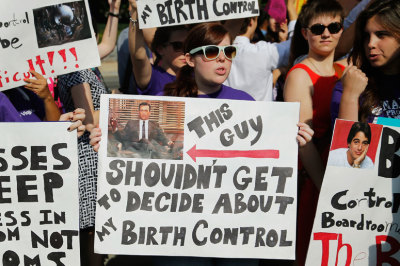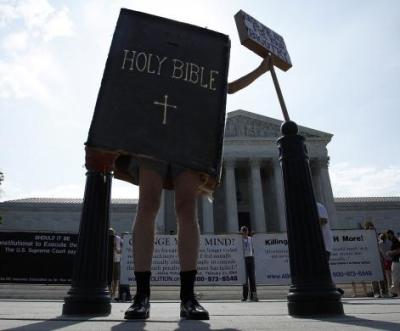Analysis: 3 Myths About the Supreme Court's Hobby Lobby Decision

The U.S. Supreme Court's recent decision to strike down the "Obamacare" birth control mandate for closely held corporations with religious objections led some media organizations to make mythical claims that the decision will cause horrible outcomes. Here are three of those myths.
1. It restricts access to birth control.
The Court's decision will "deny legions of women ... access to contraceptive coverage," Justice Ruth Bader Ginsburg wrote in her dissent.
Someone else paying for a product is not the same as having access to a product. And insurance coverage for a service is not the same as having access to a service.
No one will be denied access to birth control because of the Court's Hobby Lobby decision. One can still walk into any drug store in the country and find a variety of birth control options. The case was about mandating insurance coverage of birth control, not access to birth control.
Additionally, as Justice Samuel Alito wrote for the majority, the government can still provide access to birth control without a co-pay, it simply must use one of the many other ways it has to do that without infringing upon religious freedom.

2. Corporations can now do whatever they want simply by claiming its part of their religion.
"8 Other Laws That Could Be Ignored Now That Christians Get To Pick And Choose," Ryan Grim wrote Monday for The Huffington Post.
Hobby Lobby won because the Obama administration violated the Religious Freedom Restoration Act, the Court found. RFRA does not let anyone do whatever they want simply by claiming it is part of their religious beliefs.
Rather, RFRA sets up a balancing test for cases in which a government action infringes upon a religious belief. RFRA does not say that the religious believer always wins. The government may infringe upon religious freedom if it has a good reason for doing so (a "compelling interest") and there is no other way to fulfill that government purpose without infringing upon religious freedom (the government must use the "least restrictive means").
Indeed, Alito made it clear in his opinion that the judgment only applies to the birth control mandate, not to any other insurance coverage mandate that may conflict with a religious belief, such as vaccinations or blood transfusions.
3. The court abandoned a fundamental human right.
Mandatory insurance coverage of birth control without a co-pay became a "fundamental human right" to those on the Left via these three steps:
Step 1: President Obama (not Congress) requires employers to cover birth control.
Step 2: Liberal media begin describing the birth control mandate as a fundamental human right.
Step 3: After the Court strikes down parts of the mandate for certain employers, liberals claim the Court is violating human rights.
The birth control mandate is not in the Affordable Care Act, also known as "Obamacare." It is an executive order that came from the Department of Health and Human Services as part of the implementation of the ACA.
This means there was no congressional debate on whether there should be a birth control mandate. There was also no national debate before it was implemented. It was never brought up during Obama's 2008 presidential campaign or while the nation was debating passage of the ACA.
On the other side of the Hobby Lobby case was RFRA, a law that only three senators and no House members voted against and that was signed by Democratic President Bill Clinton.
Additionally, RFRA was a response by Congress to a 1990 Supreme Court decision that fundamentally changed how courts interpret the religious freedom clauses of the First Amendment. Laws that violate religious liberty but are generally applicable (not aimed at a particular religious group) are not unconstitutional, the Court said. Congress recognized that reasoning would severely limit religious freedom. RFRA was, essentially, Congress telling the Court to interpret the First Amendment how it had always interpreted it before 1990.
The Court's Hobby Lobby case, therefore, was a decision between an executive order implemented without public debate versus how a nearly unanimous Congress and a Democratic president told the Court to interpret the religious freedom clauses of the First Amendment.





























